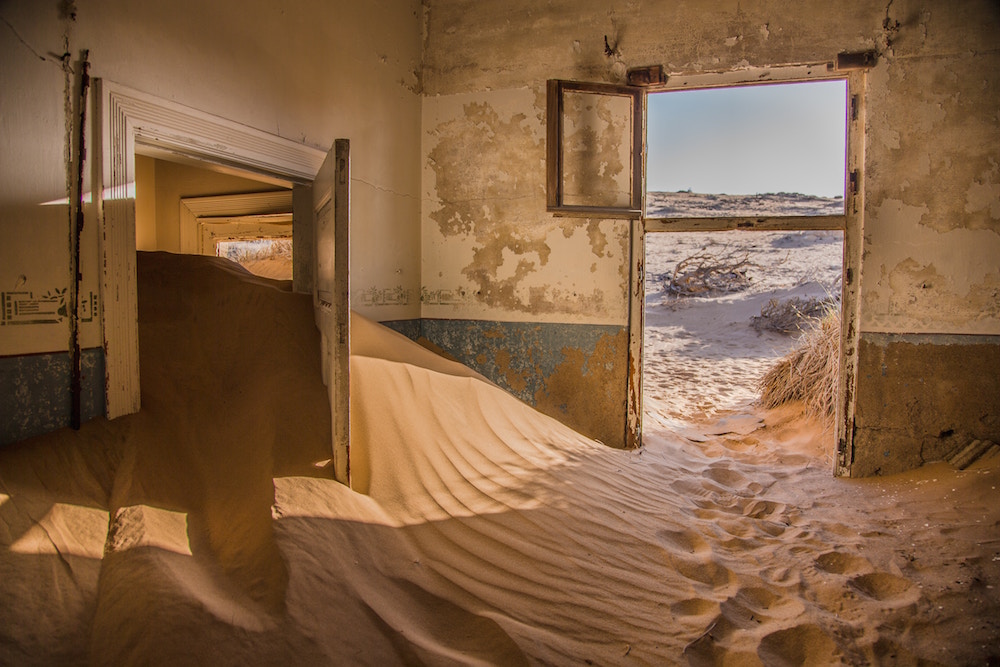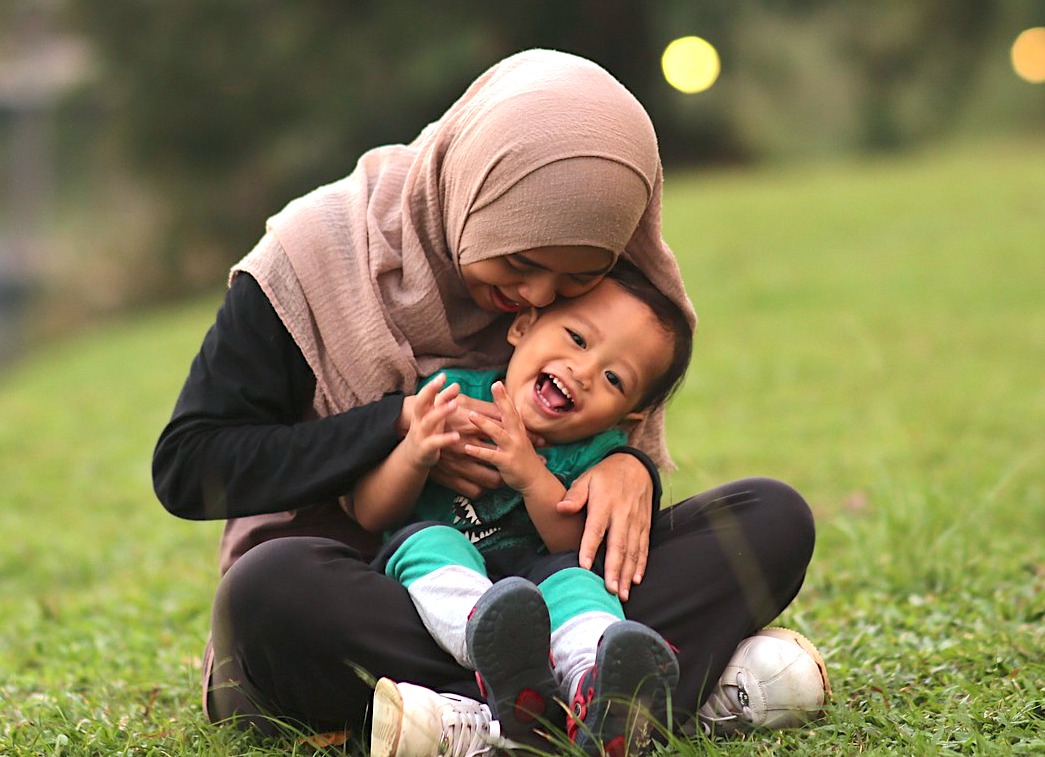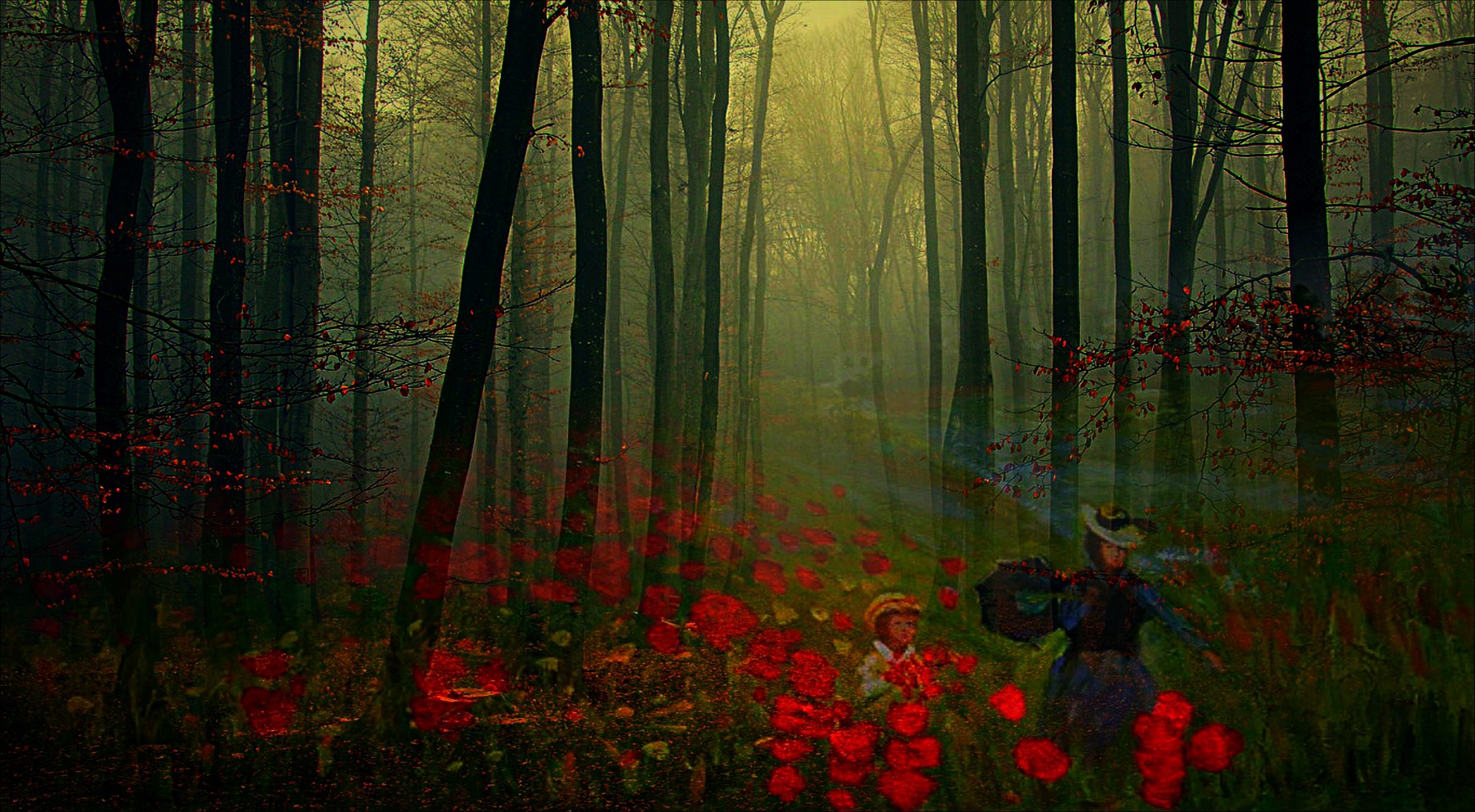Craft
What Happens When the Apocalypse You’re Writing Starts to Come True?
What I learned about living in our endangered world from writing a post-disaster fantasy

What if you’re a writer, and the post-apocalyptic world you carefully created seems to be coming true? How do you disentangle your professional catastrophizing from reality? How do you cope with despair about the future and our continuing damage to the planet? If you’ve raised your kids and you’re reaching 60, why carry on living when the world is overpopulated and resources are running out?
These were questions I wrestled with over the five years I spent writing my Fiery Spiral trilogy. The answers changed me fundamentally. I discovered that I needed to create a web of connection, and the best way to do this was through kindness—to myself, to the planet and to the people around me.
My trilogy is set in Cape Town in 2055, sixteen years after a major nuclear war has melted the ice caps and sea levels have risen 83 meters. Those who haven’t been killed by war have been wiped out by nuclear fallout, disease, famine and extreme weather events. Only 20,000 people remain alive, clustered around the southern tip of Africa, where the earliest humans lived. Two thousand of those are young adults trapped in a bunker inside Table Mountain, forced to farm food, the highest value commodity in a world low on land and technology.
To get an idea of how both individuals and the government might prepare for the cataclysmic destruction a nuclear World War III would bring, I made a clay model of the city, marking off the anticipated sea level rise. In my story, the wealthiest group, who have seized control of the city, build themselves a network of luxury bunkers on the highest land in Cape Town and surrounded it with a huge granite wall to keep out both the sea and outsiders desperate to share their vast stockpile of essentials. This group worships Prospiroh, the god of prosperity, and are manipulating the system to ensure their survival at the expense of everyone else.
The majority of Capetonians would find their homes underwater. They could escape into caves to avoid the expected nuclear fallout, but after that where could they live? How could they be safe from extreme weather? I created a community of raft dwellers and had them move into a fjord created by the flooding of Hout Bay, the leafy valley behind Table Mountain.
Next I needed an economic system based around availability of resources like food, clean water, shelter and medicine. Lastly, I designed a society where nothing has been learned by the devastation of the planet.
Books one and two were relatively easy to plot—I turned to my old favorite, John Truby’s Anatomy of Story, and worked in reveals and plot twists to show the unfolding events as things darkened politically for the heroine.
But the more I wrote, the more sensitive I became to the political events I saw on the news.
President Trump came into power and began reversing environmental legislation. He demanded a wall across the Mexican border to keep away outsiders. Extreme weather events were becoming more frequent, and social media’s reporting of them became ever more shrill. It was starting to look uncannily like the events I was writing about.
I began to reflect on the way I could see people around me, and particularly on social media responding to the news. There were various responses that arose again and again.
- To go into denial and pretend everything was fine. Just a few storms… There have always been refugees… Nothing more than usual—it’s just social media whipping up our emotions.
- To be outraged for a day or two, and then forget about it all.
- To become bitter and angry. To point fingers. I’m doing my bit but ‘they’ keep littering/using plastic bags/etc.
- To become an activist and fight for change. This was rare.
- To express it through art. I was trying to do that in my book, and all that was happening was my depression was worsening the more I focused on it.
I started book three as Cape Town’s four-year drought reached a critical level. President Trump and Kim Jong Un started their war rhetoric about the size of their nuclear missiles, and the news began to fill with devastating images of drowned refugees, starving children in Yemen, communities devastated by hurricanes.
Those of us living in Cape Town had less than a month until Day Zero when the taps would finally run dry. Our dams were at less than 10%. We were allowed 50 liters a day per person. We joined queues of people collecting water from mountain springs, made plans for composting toilets, did only essential laundry, cut our showers to three minutes maximum (collecting every drop in buckets to flush the toilets), and used greywater to water our gardens. And this wasn’t a once off problem.
Scientists told us to expect more droughts like this one in the future. More droughts would mean more devastating wildfires, more expensive food, more protesting citizens, the rise of the super-rich who could throw money at the problem to maintain their lifestyles, more refugees as wars over dwindling arable land became more frequent. We were faced with a planet imploding environmentally, and meanwhile we bickered on social media about who had pushed their way to the front of the queue at the mountain spring, and newspapers published lists of households who had used more than their allowance of water.
The theme of this final book is the battle between green and greed, and I could see it playing out more and more clearly. My generation—with our baby-boomer lust for new, shinier, bigger things—had fueled this destruction and now our children were going to pay for it. We were too focused on our quests for personal happiness and success to see that we were we losing the best parts of being human—our empathy, compassion and generosity of spirit. Meanwhile we needed more and more material things to distract us because we felt starved of real engagement with nature, with our communities and with ourselves.
I’d spent so much time thinking about a post-apocalyptic future that I couldn’t stop fixating on the disastrous world I had created.
I fell into a depression. Maybe I’d outstayed my usefulness on the planet, I thought. I’m nearly 60 years old. Perhaps it’s my duty to remove myself from the list of people using its dwindling resources. My kids told me I was catastrophizing, but I’d spent so much time thinking about a post-apocalyptic future that I couldn’t find a midpoint between hiding my head in the sand and fixating on the disastrous world I had created. But I couldn’t separate the two.
I had to tackle book three, and a technical challenge I couldn’t see a way around. At the opening, my heroine Ebba finds herself alone in a barren landscape. She must cross a desert to continue her journey. I couldn’t think of a way to make this a compelling narrative without dialogue or regular plot events to push the story forward.
The emptiness of the landscape echoed my depression. My imagination had dried up as much as the city I lived in. What was the point of finishing it? I spent more and more time escaping into the blingy world of Candy Crush, where the dopamine rushes are inbuilt.
Strangely, it was the drought that showed me the way through. One way to save water was to have a morning swim instead of a shower. But it was getting colder and I hate cold water.
I happened to watch a documentary on Lewis Pugh preparing to swim at Antarctica. “Courage is a muscle,” he says. “You have to exercise it.” I began to force myself to get in without stopping to anticipate the unpleasantness.
But as the water temperatures dropped to under 15 degrees Celsius I started to feel energized, jolted out of my head. It wasn’t just the stimulation of my vagus nerve and dopamine rush—it was the fact that I was pushing myself into feeling my hands and feet burn from the cold, into looking upwards and seeing the sea gulls swirling through the clouds before a storm, the flamingos clustered in the shallows of the vlei, the bright red aloes against the winter sky. I was connecting with nature and with my body in a way I hadn’t before.
Maybe all that was needed for my book was the courage to push myself into unknown territory.
Maybe all that was needed for my book was the courage to push myself into unknown territory. Maybe I could immerse myself in my subconscious, and let the book filter up from the depths, instead of trying to force it to conform to my conscious process.
I bought a dictaphone, and every morning after my swim, swaddled in blankets I sat quietly, closed my eyes, and told myself the story. I didn’t control it or plan—just let it flow out, trusting that somewhere in my subconscious the muse had a plot. And so the second connection happened—to a deeper part of myself, the inner storyteller. It was like free-diving to a coral reef and finding a marine display of extraordinary richness that was invisible from the surface.
The muse brought up solutions to the plot line, ones that my conscious mind would never have thought up. She had ideas for the characters too. The heroine was still the insecure girl she’d always been, too afraid to step into her power and lead. But now I found there was a second narrator—a complex, damaged man who could be a potential love interest if only he could find the courage to trust other people.
The muse brought my two main characters to a place in the story that my conscious mind would never have thought up. They find themselves in an infinite space between worlds and are confronted with their vulnerability. They are forced to reach out to each other and to connect in order to survive. They see that they are just part of a huge net of connectedness, one that not only joins them to others, but will hold them if they fall.
It was the answer I was looking for. I needed to leave my introvert safe space and start making deeper connections.
I started by sewing knickers and posting photos on my Facebook page. Many of my friends wanted a pair, so I made them as gifts, personalizing them to suit that person as I perceived them, and making sure I delivered them face to face or through other people I knew. I made several hundred, sending them all over South Africa, to Ethiopia, Kenya, Australia and New Zealand, the U.S. and U.K. And each one brought a deeper engagement with its recipient, reaching through the screen with something tangible.
I couldn’t do anything about the forest fires in Brazil, but I could do something about the people I encountered every day.
But what about the people around me? I couldn’t do anything about the dying child in Yemen, the drowned refugee on a European beach, the forest fires in Brazil. But I could do something about the people I encountered every day who needed something I could give. I could engage with intent and kindness.
In a city like Cape Town where so many people live below the poverty line, I could do my bit to ensure they had essentials. I could sew underwear for the local homeless community, for children in orphanages, and those who had lost everything in fires in the informal settlement near me.
I started sewing washable menstrual pads for a maternity hospital, and issued an open invitation on Facebook for anyone to join me. A group of twelve women formed, and we met regularly to sew, upcycling barely-used towels and facecloths from a luxury hotel into postpartum pads. I learned that there are few things more powerful than a group of strong women focused on a mutual task.
And as I started reaching across the divide and forming tiny communications with many different people, I realized I was feeling better. Each act of giving gave me a dopamine boost as good as the one I get from cold water swimming. I wasn’t doing it to be “good” or “nice” or “thoughtful.” My primary reason was to ease my own pain.
What surprised me though was the warmth and kindness that came flooding back to me. I realized in practical terms what a net of connection means—that it not only connected me to other people in a more meaningful way, but it could catch me when I was falling into despair.
As Ebba and Lucas reached the end of their journey, as they reached the end of their own self-absorption and engaged with each other and the world around them, I found my depression lifting.
Connection and kindness. That was the answer I’d been looking for. Connection and kindness.







